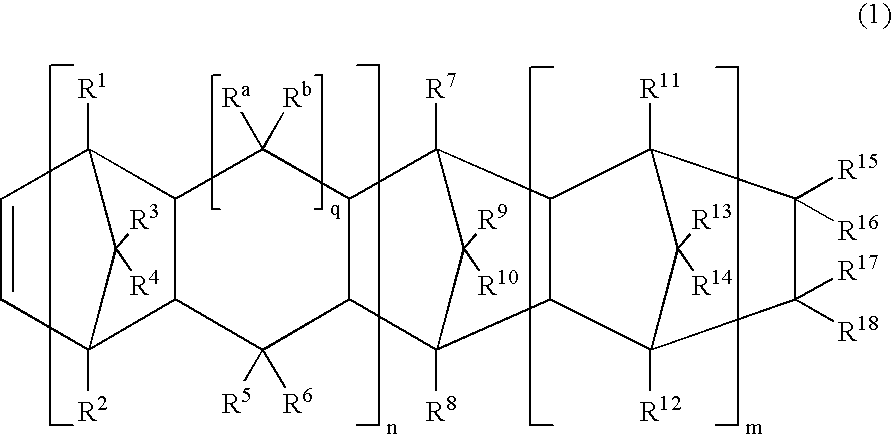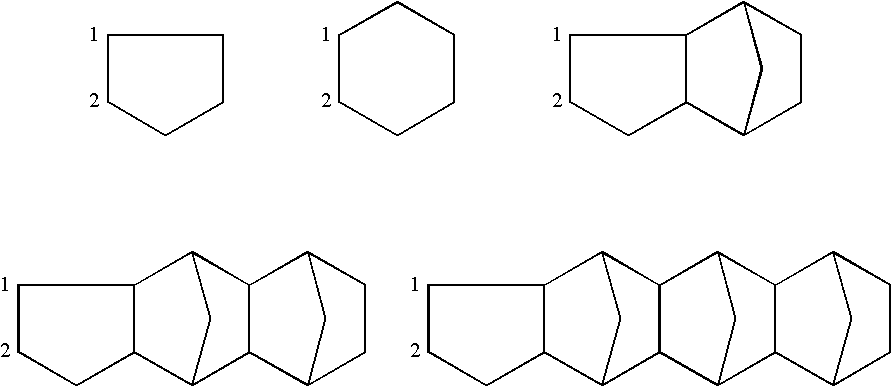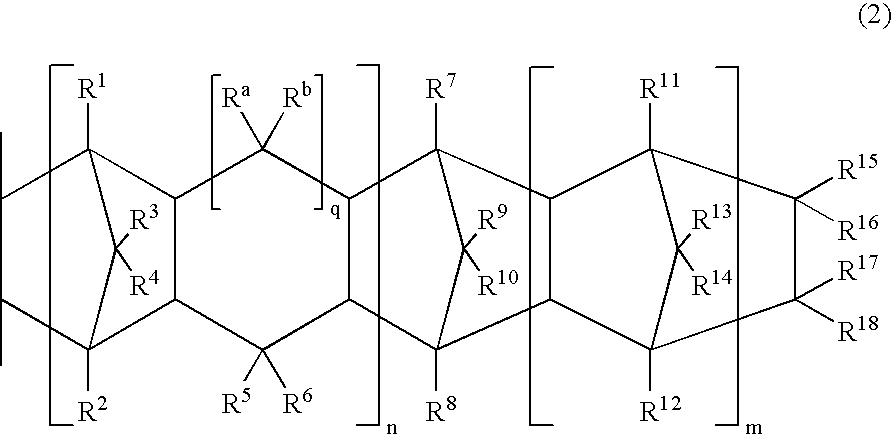Polyolefin-based molded product coated with polar polymer, method for producing the same, and uses of the same
a polyolefin-based molded product and polymer technology, applied in the direction of synthetic resin layered products, transportation and packaging, other domestic articles, etc., can solve the problems of high chemical stability of polyolefin, and inability to achieve sufficient modification of properties
- Summary
- Abstract
- Description
- Claims
- Application Information
AI Technical Summary
Benefits of technology
Problems solved by technology
Method used
Image
Examples
production example 1
[0121] [Preparation of Polypropylene Molded Product Having Radical Polymerization Initiating Group at the Surface (1)]
[0122] 170 g of a propylene / 10-undecen-1-ol copolymer produced according to the method described in JP-A-2002-145944 (molecular weight measured by high temperature GPC and calculated in terms of polypropylene Mw=26400, Mw / Mn=1.71, co-monomer content obtained from 1H-NMR measurement: 1.0 mol %) was placed in a 2-L glass polymerization vessel which had been deaerated and purged with nitrogen, and 1700 mL of hexane and 9.2 mL of 2-bromoisobutyric acid bromide were respectively added thereto. The polymerization vessel was heated to 60° C., and was heated and stirred for 2 hours. The slurry-like polymer solution which had been returned to room temperature was filtered with a Kiriyama funnel, and then, the polymer on the funnel was rinsed three times with 200 mL of methanol. The polymer was dried at 50° C. under a reduced pressure of 10 Torr for 10 hours, to obtain a white...
production example 2
[0124] [Preparation of Polypropylene Molded Product Having Radical Polymerization Initiating Group at the Surface (2)]
[0125] A polypropylene manufactured by Mitsui Chemicals, Inc. ([η]=2.6) was molded into a sheet having a size of 4 cm×4 cm and a thickness of 1.0 mm, using a compression molding machine (180° C., 10 MPa). The molded product was immersed in 50 mL of butyl acetate solvent, the inside of the reactor was purged with nitrogen through nitrogen bubbling, and then 0.5 mL of dry bromine was added thereto on the condition of light shielding . The system was heated to 50° C. and slowly stirred with a stirrer tip. After allowing the reaction to proceed for 24 hours, the polypropylene sheet was cooled to room temperature and pulled up, and the surface was washed with acetone. As a result of performing a surface analysis of the polypropylene molded product by XPS measurement, it was clear that 0.5 atm % of bromine atoms were present at the surface.
production example 3
[0126] [Preparation of Polyethylene Molded Product Having Ring-Opening Polymerization Initiating Group at the Surface (1)]
[0127] An ethylene / 10-undecen-1-ol copolymer produced according to JP-A-2002-145944 (molecular weight measured by GPC and calculated in terms of polystyrene Mw=90400, Mw / Mn=2.53, co-monomer content obtained from 1H-NMR measurement: 3.9 mol %) was molded into a sheet having a size of 4 cm×4 cm and a thickness of 1.0 mm, using a compression molding machine (150° C., 10 MPa).
[0128] As a result of performing a surface analysis of the polyethylene molded product by ATR / IR measurement, a broad absorption was observed in the vicinity of 3500 cm−1, and thus, it was confirmed that hydroxyl groups were present at the surface of the molded product.
PUM
| Property | Measurement | Unit |
|---|---|---|
| thickness | aaaaa | aaaaa |
| thickness | aaaaa | aaaaa |
| temperature | aaaaa | aaaaa |
Abstract
Description
Claims
Application Information
 Login to View More
Login to View More - R&D
- Intellectual Property
- Life Sciences
- Materials
- Tech Scout
- Unparalleled Data Quality
- Higher Quality Content
- 60% Fewer Hallucinations
Browse by: Latest US Patents, China's latest patents, Technical Efficacy Thesaurus, Application Domain, Technology Topic, Popular Technical Reports.
© 2025 PatSnap. All rights reserved.Legal|Privacy policy|Modern Slavery Act Transparency Statement|Sitemap|About US| Contact US: help@patsnap.com



